Radagast II: where are the tombs, and when do we see them?
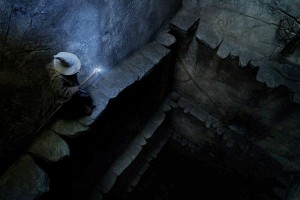
That Gandalf is not formally a part of Thorin’s group is of course a central plot element: it’s because he can’t be counted as one of the party that the Dwarves need Bilbo to be the lucky fourteenth member. In Tolkien, there are two types of reason for this. The authorial reason is that Gandalf is too powerful a character, and his permanent presence among the company would restrict the range of perilous situations that Tolkien could have the company face. The reason internal to the story that Tolkien then invented was that Gandalf had other wizardly business he expected to have to attend to, and therefore could not commit to accompanying the Dwarves the entire time; specifically, Gandalf expected to be working with the White Council against the Necromancer.
(The glib jest here is that it’s a good thing for Jackson that he did, because without the Necromancer storyline there might not be material for more than one movie. The truth is that without this seemingly offhand connection, there might be no Hobbit or Lord of the Rings at all. Tolkien abandoned The Hobbit in the middle of the first chapter, and when he picked it up again about nine months later, he introduced the Necromancer (Sauron) within pages. Had Tolkien consciously decided to set this new story in the world of his legendarium, and is that the reason he resumed work on it?)
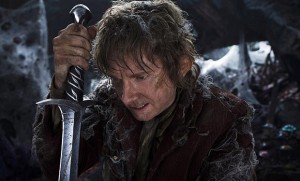
So there is a big scene where the Dwarves groan and look distressed and plead with Gandalf and offer him “dragon-gold and silver and jewels” not to leave them. But this doesn’t happen at the eaves of Mirkwood, where it would be most dramatic. It happens at the Carrock. Gandalf has given them two days’ advance notice of his intentions.
There’s a good internal story reason for this: Gandalf is wise and good-hearted, and telling the Dwarves in advance, so that they can get used to the idea of his leaving, is the right thing to do. It’s in character. But there is, I think, an even stronger authorial reason. Gandalf leaving the Dwarves in the lurch at the edge of Mirkwood has no sound story reason; Tolkien simply needs Gandalf out of the way to make the forest sequence work. It’s an authorial contrivance, a diabolus ex machina, and Tolkien cheerfully admitted this in his letters. Gandalf’s advance notice that he’s leaving is designed to alert the reader as well as the Dwarves of this unsupported upcoming plot turn, and hence make it seem more organic and less arbitrary.
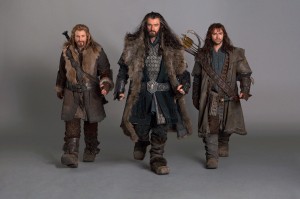
All of this can be fixed and improved in the movie. First, we now have an internal story reason for Gandalf’s departure—in fact, we’ve made it an entire parallel storyline to the Quest of Erebor. So there’s no longer any authorial need to tell us of Gandalf’s departure in advance; it will still seem uncontrived even if it comes as a surprise. So why not make it one? You can have Gandalf tell the Dwarves that he might have to leave them just when things will get scariest, but that he very much hopes not to. The Dwarves can steel themselves against this possibility while hoping fervently that it doesn’t come true.
And just as they are preparing to enter the forest together, Gandalf can get a message from Radagast: meet me at the tombs, now. Everyone is surprised, everyone is distressed — Gandalf included. Mirkwood’s even scarier now that we see how badly Gandalf wanted to help the Dwarves deal with it. The Dwarves’ despair at his absence doesn’t make them look bad, because they were blindsided at the last possible moment. And we can see them tighten their belts and summon the courage to plunge onward nevertheless. It seems to me to be inescapably better storytelling, and I don’t think Jackson will miss it.
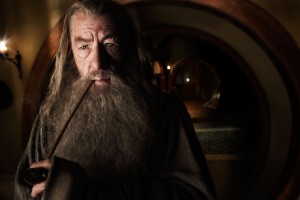
That journey would have to be either uneventful or eventful, and both are unacceptable narrative choices. We’ve just gone to great lengths to establish that a journey through the Mountain Passes is dangerous, so Gandalf—and separately, Radagast—just can’t go waltzing over them unhindered; that would weirdly undermine the previous thirty minutes of the movie. And yet the two known perils of the Passes, goblins and stone-giants, have been used already, which means the Wizards would have to face a peril that was either redundant, or wholly invented and thus intrusively unfaithful to the book. More importantly, encountering any sort of difficulty wouldn’t serve to advance the story, but in fact would hinder it. We want to get to the Nazgûl tombs: that’s the next story point. They need to be nearby. So Jackson needs to come up with an internal story reason why the Dúnedain would entomb the Nazgûl in Anduin Vale, far from their own homes.
And it turns out that the reason is right in Tolkien. In LOTR, the Witch-king alone “comes north” to Angmar and is not even recognized as one of the Nazgûl. Tolkien never specifies where the other eight are at this time, but it’s not Mordor, which is still closely guarded. Dol Guldur (400 miles south of Carn Dum in Angmar, and 300 miles east) is probably the best guess. And in the movie, having the rest of the Nazgûl be the original lords of Dol Guldur would serve three purposes: it would explain Mirkwood’s initial darkening, it would make Dol Guldur’s later occupation by Sauron himself more credible to the Wise, and it would thus increase Gandalf’s regret at having missed this.
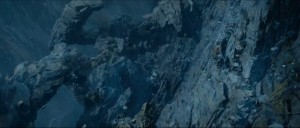
So here’s our new backstory. The Dúnedain defeat the Witch-king in Eriador and, after failing to destroy him, immobilize him with spells; they then bring him East to Dol Guldur, and work the same magic on the rest of the Nazgûl.
(Note that separating the Witch-king from the other Nazgûl here helps explains why there is a prophecy only about his death, and not about the Nazgûl in general.)
They’re not going to carry all Nine back to Eriador; they’re going to entomb them nearby. Nor is that an impractical idea, if the tombs are located between Elrond, Galadriel, and Radagast.
And here’s a bold guess for exactly where the tombs are: the Carrock. To begin with, it already has a cave. It’s surrounded on three sides by a river, and hence the burial of the Nazgûl here would echo the suggestion in Tolkien that the Nazgûl don’t much like water, and thus have an evocative resonance with their defeat at the ford of the Bruinen in FOTR.
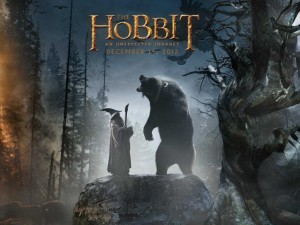
The one obvious drawback to this idea is that it seems to open a plot hole: why doesn’t Gandalf stop and investigate the tombs the first time he’s there, after the Eagles have dropped him right on top of them? But this actually fixes a plot hole that was latent in Tolkien and that Jackson has probably exacerbated by having orcs about, and still presumably hunting them after the treetop rescue. Why wouldn’t Gandalf have the Eagles take them much closer to Beorn’s? Why land seven miles away, at the Carrock? The Eagles don’t like to fly within arrow range of human settlements, and Gandalf doesn’t want to get within easy sight of Beorn’s halls, so he can work his two-at-a-time ruse.
But there’s no good reason why they couldn’t land a mile or so away and spare themselves an entire morning’s journey. So what I think might happen is this: as they circle high above Anduin Vale, Gandalf has the Eagles look for signs of orc and Warg activity. The Eagles see some (mostly pursuing Radagast, although only we know that), but Gandalf makes the decision to land at the Carrock to investigate the tombs, even though that would be time-consuming.
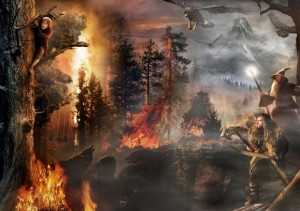
So he instead decides to seek out the safety of Beorn’s lodgings as quickly as possible. (All of this we would understand only after the fact, when we return to the Carrock. And if Jackson has really introduced a party of orcs from Dol Guldur hunting the company as soon as they get East of the Mountains, they need to be put out of action for a while to allow the party to get to Mirkwood, and then the tombs to be examined—this may well be connected to Radagast’s escape.)
I might be entirely wrong about this, but I include it as an example of something the movie will stress: Gandalf’s occasional uncertainty and self-doubt. In both the book and the movie, the Istari (Wizards) have been sent to Middle-Earth in advance of Sauron’s return and have spent many long years preparing for that eventuality (the only difference being that in the book, Sauron returns much sooner and goes undetected much longer). By delaying the Sauron storyline, Jackson can show us the crucial moments when Gandalf first takes on the great task that has long been appointed for him: being the enemy of Sauron. Tentative first steps and missteps, and the lessons they teach, make for terrific drama; the better Gandalf gets at his job, the less interesting a character he becomes (although he becomes more inspiring to an almost precisely opposite degree). Gandalf is the one character who has a story arc across all six movies; an unsure Gandalf is precisely what Jackson wants to show us here at the start.


